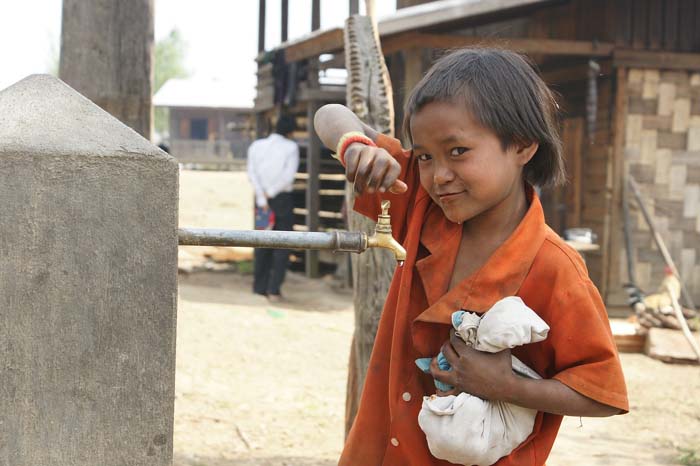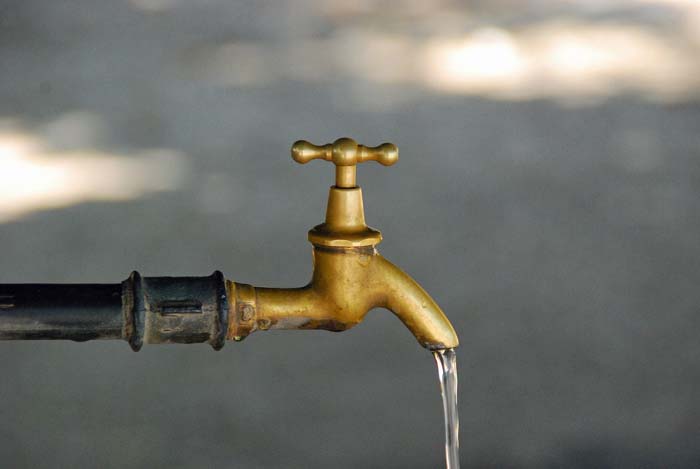
Instead of depending on water supply from a utility company, boreholes provide an alternate way to supply water to your property. You can get to the groundwater and pump it into your house by drilling a hole in the earth. The following is the procedure to follow in order to install a borehole on your property. However, there are many things to think about and plans that you must make beforehand:
Steps about how to install a borehole
Site survey
A vital part of borehole installation is site selection. This entails finding the best spot on your property to drill. Topography conditions, distance to the location of water use, and water availability are some aspects that need careful consideration.
Professionals carry out a complete geophysical survey to find out how deep the water source is and how much it could provide. Additionally, follow all local rules and regulations, including those pertaining to permits. Additionally, stay away from any sites that could be a source of contamination. The success of your borehole project on your farm hinges on the site you choose. This is because it increases the likelihood of getting a sustainable and pure water source.
Acquire the necessary licenses
Before you install a borehole on your farm, be sure you have all the required licenses. Compliance with applicable rules and regulations governing groundwater extraction and environmental protection necessitates the issuance of these licenses by local or regional authorities. While the exact licenses needed could differ from one place and set of regulations to another, it’s common to need to secure authorization for things like land use permits, water rights, drilling operations, and environmental impact evaluations.
Not only is it the law, but getting these permissions in advance of drilling might save you money and keep the project from getting halted. Responsible and sustainable borehole drilling that doesn’t harm the environment or nearby communities is possible when you work with the proper regulatory agencies and follow their rules.
Pumping and drilling
You can arrange for a specialized drilling company to drill the borehole once you get the necessary permits. In addition to lining the borehole, the workers will drill to the depth specified in your site visit. A pump to get water from the borehole and pipes to carry it to your house are also required, in addition to drilling to the required depth. A professional can recommend the best borehole pump for your specific needs.
Water quality
An essential step in ensuring safe drinking water is assessing borehole water’s biological, chemical, and physical properties. This testing ensures the water is safe to use for purposes including livestock watering, irrigation, and human consumption. Nutritional content, heavy metals, turbidity, pH, dissolved oxygen, and microbiological pollutants are among the many tested parameters.
The purpose of water quality testing is to determine whether or not the water is fit for human consumption and other uses. This is done by analyzing these aspects and finding contaminants or health hazards. To ensure a consistent supply of safe water for your farm and its inhabitants, it is crucial to test the water quality on a regular basis. This will allow you to track any changes over time and address any problems as soon as they emerge.
 Maintenance
Maintenance
Maintenance is essential to keep the borehole and supporting infrastructure sustainable and operational over the long term. In order to find and fix any problems quickly, regular maintenance includes inspecting and servicing the pipes, pumps, and other components at regular intervals. As part of this process, you should inspect the pump and its electrical connections for damage or leaks and general wear and tear.
To keep the borehole and its surroundings free of debris and contaminants, it is necessary to clean them regularly. Additionally, you should check the water’s quality at regular intervals to ensure it’s still safe to use. You can ensure your farm has a steady water supply by keeping up with routine maintenance. This will help you catch problems early on, which means fewer expensive breaks and a longer life for the borehole system.
Can a borehole be drilled anywhere?
You can dig or drill a borehole anywhere. However, it must be beyond a certain distance from existing contaminants and water points to guarantee they are hygienic. It has to be set up upstream of any potential contaminants. It should not be near areas that use fertilizers or pesticides, and it shouldn’t be in a floodplain either.
- Your borehole should ideally be near a power supply if you intend to use an electric pump. Another option is to install a power point and run electrical cords to the pump.
- To keep your water pressure high, position your borehole far from other holes in the ground.
- To avoid pollution from septic tanks or runoff, the earth must slope away and downward from the borehole if the installation is on sloped ground.
- Water tables are higher at some locations than others. For optimal water pressure, it is best to locate your borehole close to one.
How deep should borehole be?
Numerous elements, including static water level, drilling costs, geological features, and others, determine the borehole depth. Hence, there is no universally applicable answer to this topic.
However, producing boreholes ought to be 100 meters deep, and the majority of domestic wells ought to be 60 meters deep.
How long does it take for borehole water to clear after drilling?
Depending on the quality of the water and the specific impurities present, borehole water can take longer than the normal two to three weeks for the water to be clean. Keep in mind that clearing the borehole water is not a one-and-done task. Ongoing water quality monitoring and regular maintenance of the water supply system and boreholes are necessary to guarantee that the water is safe to drink.
It may take several weeks to clear the water from a borehole, but there are four simple steps: testing, chlorination, flushing, and filtering. Be sure to add chlorine to the water, and select and maintain the filter according to the manufacturer’s instructions. After that, collect and submit the water sample for testing exactly as instructed. Keeping the water supply system and borehole well-maintained is essential for keeping the water safe to drink.
How much does it cost to drill a borehole?
There are numerous factors that can affect the cost of drilling a borehole. Among them are:
- Borehole’s depth
Drilling a deeper borehole is more expensive since it takes more time and resources.
- The site’s geology
The cost could change depending on the rock and soil types encountered while drilling. It takes more time and powerful tools to drill through hard rock formations.
- Equipment and Installation
The expense of installing a borehole pump and associated equipment can greatly affect the total cost.
- Maintenance
In order to keep the borehole running efficiently and avoid costly repairs in the future, regular maintenance is essential.
- Testing the water
Before using the water for anything, it needs testing for pollutants to make sure it’s safe.
Can I drill my own borehole?
No, highly skilled workers are required to complete a borehole project successfully. You still run the danger of the borehole collapsing over time if you use do-it-yourself tools and don’t set the well screens correctly relative to the aquifer.
How much water can a borehole produce per day?
After the experts install a borehole on your property, you won’t have to pay a dime to use this water. Up to twenty thousand liters of domestic water can be retrieved daily from a residential borehole.
Developers and purchasers of newly constructed properties may find a private water supply more desirable than mains water supplies.
What can go wrong with a borehole?
- Wear and corrosion
Corrosion and degradation of borehole components over time can lead to reduced efficiency and, eventually, system failures.
- Inadequate water supply
Borehole owners often face the challenge of an inadequate water supply. There are a lot of potential causes for inadequate water levels, including geological formations, hydrological changes, and incorrect drilling techniques.
- Low yield and decrease in water level
During intense pumping or droughts, boreholes may experience limited output or declining water levels.
- Inefficiency or failure of the pump
When pumps in a borehole system fail or are inefficient, it can significantly affect the system’s functionality.
- Clogging and scaling
The accumulation of biological development, sediment, or mineral deposits inside the borehole might lead to scaling and blockage. The flow and quality of the water might be affected by these issues.
- Water pollution
A big concern with boreholes is the possibility of water pollution. Various contaminants can enter the well through poor design, commercial activities, or surface runoff, among other potential locations.
The lifespan of a borehole
Boreholes are assets that, with little upkeep in the first ten to fifteen years, can last for fifty to eighty years. But this can only come to fruition if you put your brain into it from the get-go and spend sensibly for the long haul.
The difference between drilling and boreholes?
There is a difference despite the frequent interchangeability of the words. The drilled hole is all that the term “borehole” refers to. Just for a sample, there are a lot of “borings” (geotechnical, stratigraphic, etc.).
Conclusion
If you’re looking for a long-term, dependable water supply for your household needs, livestock, and farm irrigation, borehole drilling could be the way to go. Adherence to the best procedures and meticulous preparation are important for a borehole drilling project’s success. You may build a beneficial water resource that will sustain your farm’s growth and productivity for years to come if you follow the above instructions and get professional help when you want to install a borehole.
